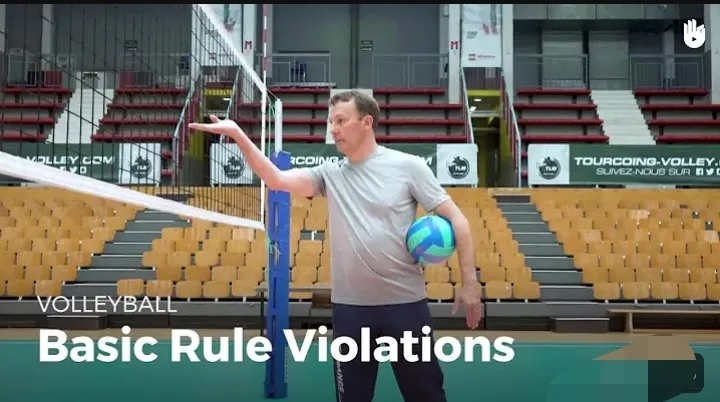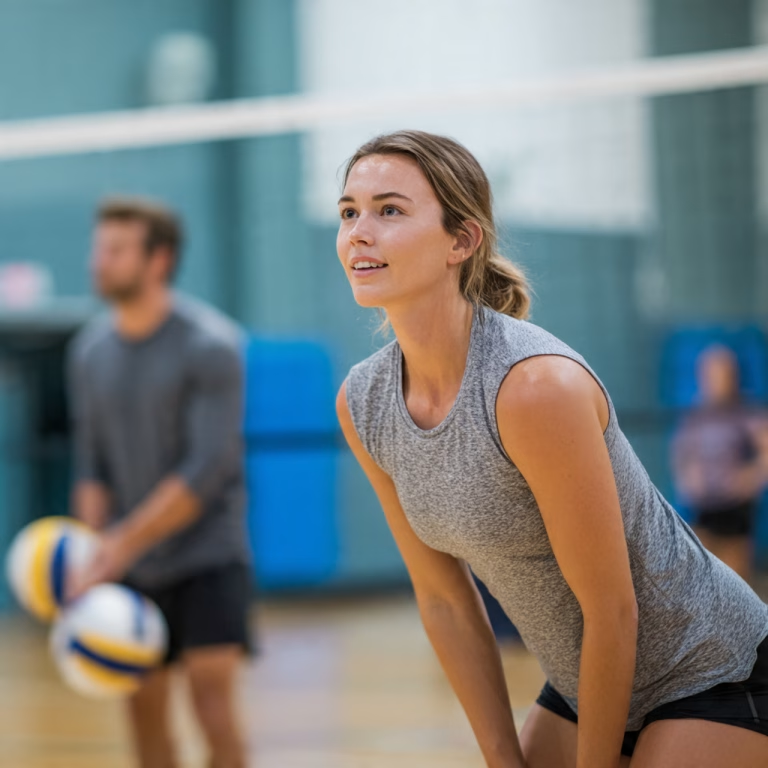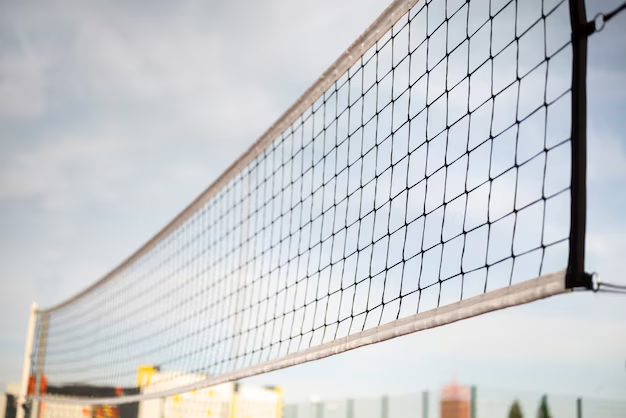Ignorance of the volleyball violations and basic rules does not exempt a player from penalties. In volleyball, breaking the rules can lead to warnings, removal, or even disqualification. Let’s discover what players must avoid on the court in order not to violate any rules.
Major Volleyball Violations
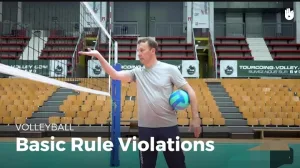
1. Touching the Net
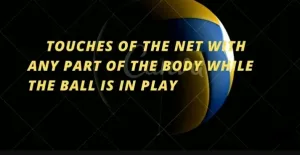
It is prohibited for any player to touch the net. This is a common violation, often due to safety breaches. Since 2014, the rules have been stricter, disallowing even the slightest contact with the bottom of the net to ease referees’ duties.
2. Touching the antenna
Players must not touch the antenna above the net, including with the ball. Violating this rule not only results in losing points but can also cause injuries during player collisions.
3. Stepping Over the Center Line
Players must not step over the center line into the opponent’s court, except for the feet, which can be above or partially touching the line.
4. Touching the Ball Before the Opponent’s Attack
Touching the ball when it is in the opponent’s possession before they complete an attacking hit is not allowed. However, hands can cross the net during a block if they do not interfere with the opponent’s play.
5. Blocking an Opponent’s Pass
Blocking an opponent’s pass is prohibited.
6. Throwing the ball up more than once – Serving Violations
Players are not allowed to throw the ball up more than once during serving and must hit it within 8 seconds after the referee’s whistle.
7. Attacking from the Back Row
Back row players cannot attack from the front zone or step over the attack line during a jump. They may land in the front zone after the hit.
8. Consecutive Contacts (Multiple Touches)
In volleyball – consecutive contacts is not allowed. A team cannot touch the ball more than three times before returning it over the net. Accidental touches count, but blocking does not.
9. Catching or Holding the Ball
Holding or throwing the ball is illegal. The ball must rebound off the hit.
10. Assisted Hit
It’s illegal for a player or any object to assist a teammate in playing the ball.
11. Out of Rotation
Players must maintain their rotation order. Any deviation from this order, especially during the serve, results in a violation.
12. Double Hit
A player is not allowed to hit the ball twice consecutively, except when blocking, provided the contacts are simultaneous. An exception is made on the team’s first contact if the consecutive hits occur during one action.
13. Foot Fault
During a serve, the server must not touch the court or the ground outside the service zone at the moment of service contact or takeoff for a jump serve.
13. Uncultured Behavior
Rude behavior, name-calling, offensive gestures, and physical attacks on the court are strictly forbidden.
Volleyball Mistakes
Mistakes during blocking, attacking, and receptions often lead to rule violations and penalties.
Attacker Mistakes
- Fast Approach: Approaching the ball too quickly can cause mistiming and running under the ball too early.
- Slow Approach: A slow approach due to incorrect timing or a poor pass can lead to weak attacks or sending the ball into the net or out of bounds.
- Running Under the Ball: Running under the ball limits attack control and space, often resulting in missed or faulty strikes.
- Bent Arm Strike: Hitting with a bent arm can send the ball off-target.
- Tangential Strike: Proper strikes should aim at the center of the ball with the palm, not the edge or fingers.
- Straight Wrist Strike: Bent wrist strikes allow better ball control; a straight wrist can send the ball out of bounds.
- Premature Relaxation: Attackers must stay alert after a strike as the ball may return via a pass or block.
- Neglecting Flexibility: Regular flexibility training is crucial for effective jumps and precise arm movements.
Libero Mistakes
- Incorrect Hand Position: Hands should be together tightly during lower techniques.
- Straight Legs: Legs should be slightly bent during receptions.
- Upper Technique Errors: Fingers must be spread wide, and the ball should be received above the head, not from the chest.
- Tense Hands: Hands and fingers must remain tense to avoid slipping and maintain control.
- Body Posture: The body should be straight, and hands should be scooped correctly during passes.
- Symmetrical Elbows: Elbows and forearms should be parallel when performing upper techniques.
- Constant Focus: Libero must always track the ball and react promptly.
Blocker Mistakes
- Wide Arms: Arms should be kept close to avoid gaps.
- Relaxed Wrists: Wrists must be tense to withstand strong attacks.
- Overextending Hands: Hands should not interfere with the opponent’s play or extend too far beyond the net.
- Proper Arm Position: Arms should spread just before jumping to avoid collisions.
- Stepping Over the Center Line: Crossing the line is both dangerous and penalized.
Conclusion
Understanding and adhering to basic volleyball rules is crucial for a fair and enjoyable game. Common volleyball violations such as consecutive contacts, four hits, and assisted hits can disrupt the flow of the game and lead to penalties.
A player must avoid making consecutive contacts unless it is the first team contact, and the ball must rebound, not be caught or thrown. Ensuring the ball crosses the net within the designated crossing space between the imaginary extensions of the antennas is essential to avoid a violation.
The official rules also dictate that the ball must cross the net without contacting the net or the ceiling. Contact with the net is a fault if it interferes with play, and stepping over the center line into the opponents’ court is generally prohibited unless the penetrating hand or foot is above or in contact with the center line. Attacking faults occur when a row player from the back completes an attack hit from the front zone while the ball is above the net’s top or if a libero makes an attack hit from an overhand finger pass.
Foot faults occur during service contact if the server steps outside the service zone or court boundaries. Proper form must be maintained to avoid penalties. Blocking within the opponents’ space is allowed only under specific conditions outlined by the rules.
In conclusion, by understanding and following these basic violations and basic volleyball rules, such as avoiding consecutive contacts, ensuring proper ball crossing, and adhering to the regulations on attacking faults and foot faults, players can maintain a smooth and competitive game. Awareness and adherence to these rules not only ensure fairness but also enhance the safety and enjoyment of the sport for all participants.
Understanding to these rules and avoiding common mistakes will help players stay compliant and safe during the game.

